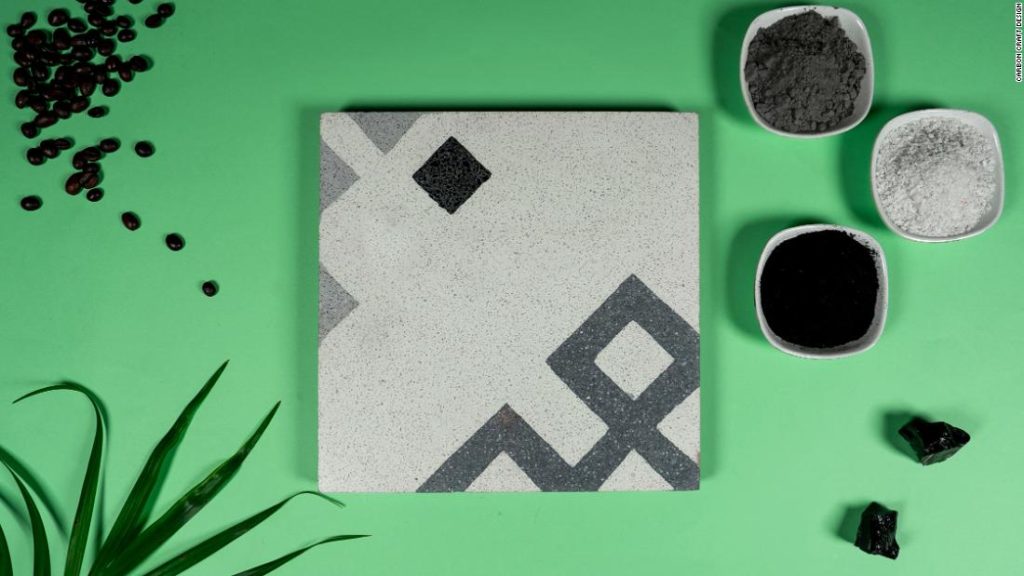Indian architect Tejas Sidnal was shocked to discover the construction industry’s role in the pollution crisis. “That was a crazy eye opener,” he says. “As architects, we are responsible for so much air pollution. We can do better.”
Determined to make construction more sustainable and tackle India’s air pollution, Sidnal launched Carbon Craft Design in 2019. The startup takes blcack carbon extracted from polluted air and upcycles it to make stylish, handcrafted building tiles.

In 2019, New Delhi suffered record smog levels. Credit: SAJJAD HUSSAIN/AFP/Getty Images
“We found a way to add value to this recovered carbon by using it as a pigment in carbon tiles,” he says.
Building with pollution
To create the carbon tiles, Carbon Craft Design partnered with Graviky Labs, an Indian company that previously created “Air Ink,” a technology that captures carbon soot from cars and factories, and converts it into ink and paint.
Graviky Labs uses a filter device to capture carbon soot from diesel exhaust and fossil fuel generators, removes contaminants such as heavy metals and dust from the soot, and gives the purified carbon to Carbon Craft Design in powder form.

This mural in Hong Kong was painted by the artist Caratoes, using Graviky Lab’s “Air Ink.” Credit: courtesy caratoes
“Graviky Labs views pollution as a resource,” company founder Anirudh Sharma tells CNN. “We are one of only a few companies in the world to capture these carbon emissions and turn them into new materials.”
Carbon Craft Design mixes the captured carbon with cement and marble waste from quarries to produce monochromatic tiles. Sidnal says the company aims to ensure each tile contains at least 70% waste material. It sells the tiles to architects and retailers for $29 per square meter — a high price compared to regular ceramic tiles.
As the company scales up production, Sidnal hopes to lower prices and produce a cheaper range of carbon tiles. “We want to hit the affordable sector,” he says. “Sustainability is not only for the elite.”

Carbon Craft Design uses a hydraulic press to mold carbon, marble and cement into a monochromatic tile. Credit: Carbon Craft Design
Since launching its first tiles a year ago, Carbon Craft Design’s customers have included global fashion brands and architecture firms in India. In November 2020, the company retrofitted an Adidas store in Mumbai, covering the walls and the floor with its carbon tiles.
Architect Manan Gala, whose firm Bombay Contractors designed the Adidas store, describes the carbon tile as a “winner” for the construction industry. As well as being sustainable, “the product has better strength than conventional cement tiles due to the carbon content, and the raw and rustic feel adds to the overall charm,” he says.
Carbon Craft Design is currently raising investment and hopes to start distribution in Europe this year, says Sidnal, adding that “we are swamped with inquiries from in and out of India.”
You may also like
-
UK coronavirus variant has been reported in 86 countries, WHO says
-
NASA technology can help save whale sharks says Australian marine biologist and ECOCEAN founder, Brad Norman
-
California Twentynine Palms: Explosives are missing from the nation’s largest Marine Corps base and an investigation is underway
-
Trump unhappy with his impeachment attorney’s performance, sources say
-
Lunar New Year 2021: Ushering in the Year of the Ox

